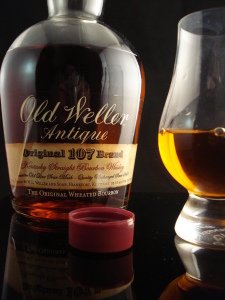I’ve been following Matt’s Barrel Aging Experiment with great interest over the past month or so. So I was pretty excited when Matt delivered sample of his first two pours from the barrel to me along with a control sample of the un-aged Old Weller Antique.
So during my Fantasy Football Draft (this is the year I finally regain the trophy…I SWEAR), I decided to do a linear tasting of the three samples. As you may remember, I’m ever so slightly more critical of Old Weller Antique than many of our readers (it has become en vogue to profusely express love for it these days due to its Pappy Van Winkle connections.) My main complaints are the same complaints I level at nearly all the younger wheaters out there- they’re too young. Wheat in a bourbon takes some time to mellow and become sweet. Until then, it has a medicinal, almost rubbing alcohol-like bite on the tip of the tongue for me. Seven years, which Old Weller used to claim as its age statement, isn’t long enough, in my experience. 10 years and above is when wheated bourbon really starts to pick up flavor and texture and from 12-20 years can really shine. So it was with this in mind that I was extra interested in Matt’s experiment.
The first sample was a control sample, so there’s no need to talk about that. It was straight up Old Weller Antique, no age statement. The second sample was drawn on 7/28/2014, after about a month in the barrel. The third sample was drawn on 8/4/2014, about a week later. It should be noted that home barrel aging is different than the aging done in warehouses. First off, the proof is lower. Old Weller Antique is cut to 107 proof from whatever its barrel proof was, so there is a weaker distillate going into the barrel. Second, these are used barrels, so there is already a level of saturation to the wood used. Last, these are very small barrels (1 liter, in this case). That means there is a far larger percentage of surface area of alcohol touching the wood in these than in larger barrels. hence, the process of drawing flavor from the wood is quicker. In some cases, it’s much quicker. So weeks here may equal years in a rick house. Some of that may be offset just a touch by aging indoors where temperature remains fairly constant, and the common refrain from home barrel agers is that there is a quick drop off point where aging at home ceases to add good flavor and just turns the alcohol bitter. To some degree, the issues are little different than producers would face if they were using smaller barrels in climate-consistent warehouses. Nevertheless, home aging and warehouse aging should not be considered one and the same.
It’s clear that home barrel aging does make a difference. Sample #2 had started to pick up some woodiness and age on the palate. It had just a touch of Elijah Craig-like age on it, which was interesting from a wheater. It was sort of like damp sawdust, where Elijah Craig is more of the ‘old boathouse’ taste. It also developed some spiciness to the back end reminiscent of cinnamon and pepper. All in all, I thought it was a very nice sip. I’m not sure whether it’s remarkably better than standard Old Weller, but it’s certainly different, and not in a bad way.
Sample #3 was different. Where the wood and spiciness had developed in Sample #2, this one is already turning bitter. The Cinnamon is gone, and the char from the barrel seems to overpower the wood, so it’s more like a charcoal filtered whisky than a sweet Kentucky bourbon. It’s not terrible, but it is most definitely past its peak time in the barrel. On matt’s suggestion, I did mix it a bit with the rest of sample #1. This helped tame the bitterness, but it didn’t really let anything new shine through, making it a slightly less bitter version of Sample #3.
Conclusion:
Home barrel aging is very interesting. It clearly impacts the flavor and character of whatever is aging in it. The fact that it happens quickly in a small barrel just makes it far more palatable to the standard consumer who is never going to wait years to try their own drink. In this case, I think from my very limited experience that the key to successfully aging a straight bourbon is to not overage it. There is a peak, and it approaches very quickly, apparently, at which the bourbon ceases to bring interesting and pleasant flavors from the barrel and instead turns bitter. At this stage, I’d say that timing is right around a month, give or take a week.
This has certainly piqued my interest in the process. I think it’s more likely now that I’ll eventually get a barrel myself to try aging cocktails. I’d wager the effect on a mixed cocktail may be greater than that on an already aged bourbon, so that will probably be my first experiment. Either way, we’ll share our experiences along the way.


